May 09, 2025
Author:Lisa Martinez
Cats, in particular, are territorial animals. Their boundaries are often respected, whether introducing a new cat into a house where another cat already lives, or you're simply upset with the new feline's entrance.
Regarding cat introductions, rest assured, it will be familiar territory for several cats, with hissing, swatting, and avoiding behavior indicative of a problem.
A few of these cats may take introductions to the unpleasant limit, and no cat should tolerate too much pressure.
With consent, organization, and awareness of feline body language, move forward to allow both cats to share the same energetic environmental space.
Understanding cat behavior is key in learning how to foster harmony between two cats , which means respecting the cats' boundaries while offering a safe environment that satisfies both parties; these are the key ingredients for success.
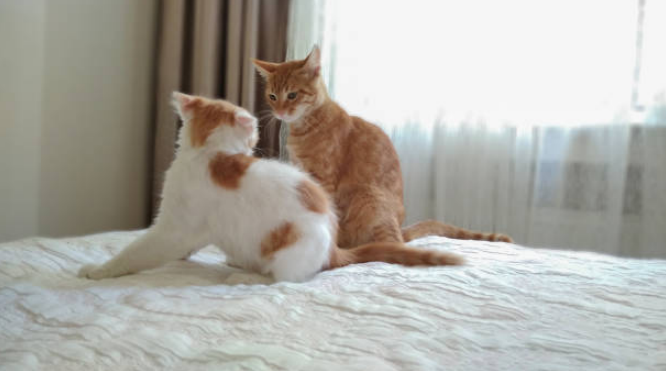
Before introducing a new cat, one must study both felines' personalities and histories. Age, energy levels, and past experiences with other animals are vital.
For example, playful, boisterous kittens may batter an elderly cat trainer who prefers low-key activities with endless love. Meanwhile, two high-energy cats might become good friends by exhausting each other.
Another often-asked question is whether two male cats can get along. The answer depends on individual temperaments and how well introductions are made.
Certainly, neutering decreases aggression and reduces territorial assertions; thus, gentle introductions remain a significant part of that cat's potential for friendship. Matching the personalities of the cats will offer a greater chance of success.
Positive interaction is facilitated through a well-prepared environment. Give separate spaces to each cat, with their litter boxes, food and water bowls, and resting things.
Positive interaction is facilitated through a well-prepared environment. Give separate spaces to each cat, complete with their litter boxes, food and water bowls, resting areas, and engaging toys.
This minimizes competition and leaves each cat with a feeling of security. Moreover, scent is very important for cat communication; hence, swapping bedding or toys between the cats for their first encounter to recognize the scents is ideal.
Hasty introductions are the major contributors to stress and aggression, so time is important when introducing two cats.
First, house the new cat in a separate room with everything it needs. Let the resident cat sniff and get familiar with the novelty by exploring the doorway into this room.
After several days, you can introduce them to each other through a cracked door or a baby gate to pay attention to their responses.
Hissing or growling should not be worrying initially, but if both remain calm, advance to short supervised introductions.
Feed for the cats is provided with closed doors, and they gradually bring their bowls close to one another over time. This would give positive associations to the other cat with the presence of eating.
When both cats can calmly eat near each other, the time has come to try very short visits in a neutral space with toys or treats to distract them from the tension and then extend these time frames further as they become more comfortable, always watching for signs of stress.
Positive reinforcement strengthens the way to make friends between cats. Calming behaviors are rewarded with treats, words, or playtime that suggest the other cat is non-threatening.
Not punishing aggressive acts will tend to cause them to behave much more anxiously. Redirect such negative behaviors with toys or take short time-outs to separate the cats. Time will build trust in addition to teaching tolerance in every peaceful interaction.
Observations of feline activity can afford insight into their relationship's progress. Relaxed body language, such as loose tails or soft, open eyes when the two are together in the presence, may indicate that cats are beginning to get along.
They develop affection, as evidenced by playful chasing or mutual grooming, which indicates a growing bond and sharing spaces such as beds or sunny spots without reservations.
Another positive milestone is when they feed or rest with each other without any hissing or avoidance behavior. These are subtle signs that cats are starting to get along toward acceptance or friendship.
Conflict happens at this point of adjustment. Hissing, swatting, or staring happen as they establish boundaries. The hostility level that involves physical fighting is when intervention must be put in place using either a blanket or a loud noise to separate them without actually handling them.
Research says that staring is the most frequently observed conflict sign, occurring at least daily in 44.9% of households.
Revert to the introduction steps, where feeding occurs through a door, to re-enable the comfort zone. Physical signs of chronic stress, including hiding and refusing to eat, may need to go at a slower pace or get help from a veterinarian or feline behaviorist.
These are the moments through which cats can spend time with each other. Interactive play sessions with feather wands or laser pointers keep them busy and deflect all their energy into fun instead of rivalry.
Place a single water fountain or treat-dispensing toy in a shared space to encourage togetherness. The bonds of sharing will further strengthen through time, turning the pages of tolerance into companionship.
Love your pets? Get them cartoonized here at Wopet.
Keep in mind that bonding takes time for every cat. Jealousy can sprout if one cat misses attention while the other gets it; thus, you spend time playing, cuddling, or grooming each one alone.
This reinforces their sense of security and keeps any lingering resentment toward each other at bay, greatly facilitating the introduction of another cat into their lives.
Curious about cats, learn How To Teach A Cat To Fetch In Simple Steps At Home?
No matter what you do, some cats might just never warm up to each other. When this vicious cycle of aggression or stress begins to hurt a cat's well-being, that can be said to mark the beginning of a give-up point. Signs consist of continuous fighting, chronic hiding, or, simply, any kind of medically observable effects, for instance, urinary problems brought on by stress.
If the introductions continue to stay tense, reach out to a cat behaviorist after a few months to uate the compatibility of the cats. In extreme cases, it may be in the best interest of both cats to rehome one to a single-cat household. Their happiness and safety come first.
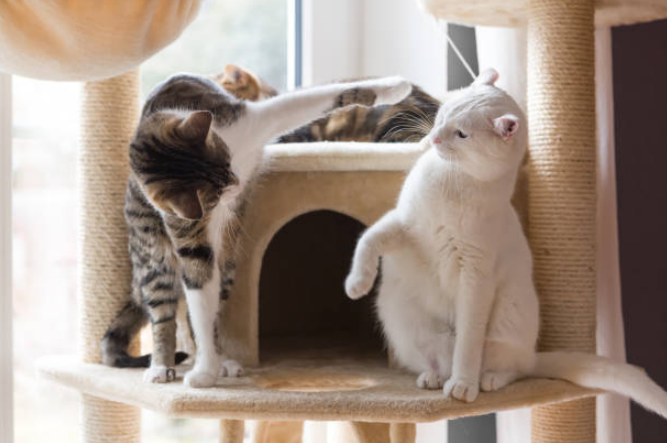
Before considering that the cats may have to be separated, trainers could offer options that have not yet been considered. If any underlying medical conditions could influence aggression, a veterinarian can help rule those out.
A behaviorist can then recommend individualized plans to diffuse the tensions. These could prescribe diffusers containing pheromones to replicate the soothing scent of other cats and environmental enrichment to decrease stress. In tough cases like these, these implements could be just what the cats need to set things in their favor.
Successfully established a harmony between two cats? Share your story with us.
Can two male cats get along? This inquiry is usually subjected to the outside influence of beliefs and myths that male cats are innately territorial.
Although male cats can dominate one another, aggression subsides when males are neutered. Thus, when two neutered males are introduced properly and given enough resources to avoid competition, they can develop a successful bond.
Therefore, success will be determined more by personality, setting, and introduction than by gender. Owners of male pairs should provide several litter boxes and feeding stations to avoid territorial conflicts.
Get your cats comfortable with each other, get them an Automatic Pet Feeder with Camera [Dual Bowls]. If you see them not fighting over food, that’s probably the end of the feud.
Achieving long-lasting peace among household inhabitants who happen to be felines entails a perpetual effort. Establishing a routine for feeding, playtime, and litter box cleaning will decrease stress levels.
Frequently rotate by introducing new toys or rearranging some furniture to keep the area interesting, preventing boredom from causing disagreements.
One should observe their interactions as they age since health issues or mobility changes may strain their bond. By being proactive, one ensures that peace will be forever.
Every step toward friendship deserves to be celebrated. This might be the first time the cats were seen napping next to each other, or perhaps a rambunctious chasing game that both cats enjoyed without hissing; all these mean progress has been made.
It is important to honor these milestones because rewarding small victories will motivate the human parent to reinforce patience and perseverance with making two cats friends.
Learn Why Celebrating Small Wins Matters.
Making cats become friends takes time, patience, and a deep understanding of their behavior.
Stage setting, gradual introductions, and positive reinforcement for good encounters will turn territorial tension into a mutual respect or love relationship.
Challenges may crop up along the way, but first indications that the cats are getting along-stealing each other's sleeping places or encouraging playful antics-offer such a ray of hope.
If done right, can two male cats get along? A glint of positive light shines through such instances. And, when the moment arrives to forgo the friendship of the cats, such a decision guarantees the well-being of each of the cats.
At Wopet, we are committed to elevating pet care with innovative feeders, water fountains, toys, and accessories — your trusted partner in creating a happy and healthy environment for your pets.
Contact Wopet for more information on pets. We would love to hear from you and assist you in upgrading your pet care experience.
You are looking for relaxed body language, shared spaces, mutual grooming, or playful chasing without hissing. This indicates that they are becoming more comfortable, which can ultimately culminate in a possible friendship between your cats.
Yes, neutered male cats will come to terms with each other through time, extensive equality resources, and similar personalities to minimize the chance of territorial disputes and encourage harmony over time.
Last resort would be to consider rehoming them when they stay feisty, have consistent stress levels, or develop health issues like urinary problems that linger on for months, with slow introductions and professional guidance.
Popular Post

What to Feed a Sick Dog With No Appetite? [2025 Guide]
May 16, 2023

Troubleshooting Common Issues with Automatic Pet Feeders: Tips & Tricks for Pet Owners
Oct 26, 2023
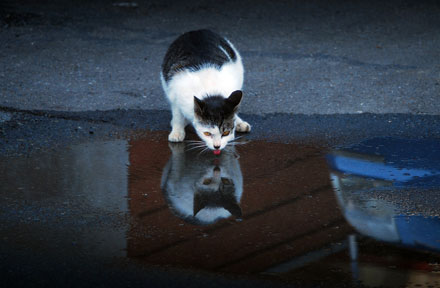
Why Does My Cat Cough After Drinking Water? 8 Potential Reasons
Mar 13, 2023
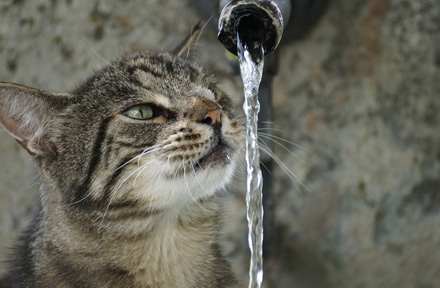
Why is My Cat Throwing up Water? Top 5 Causes Here
Feb 08, 2023
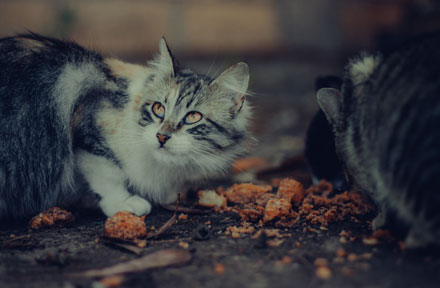
My Cat Only Eats A Little at A Time - What to Do?
Feb 27, 2023
$99.99
$129.99
Copyright © 2025 WOPET. All Rights Reserved.